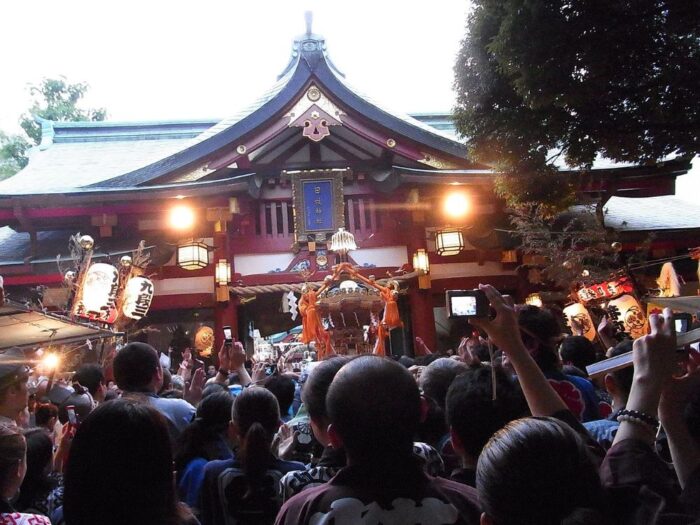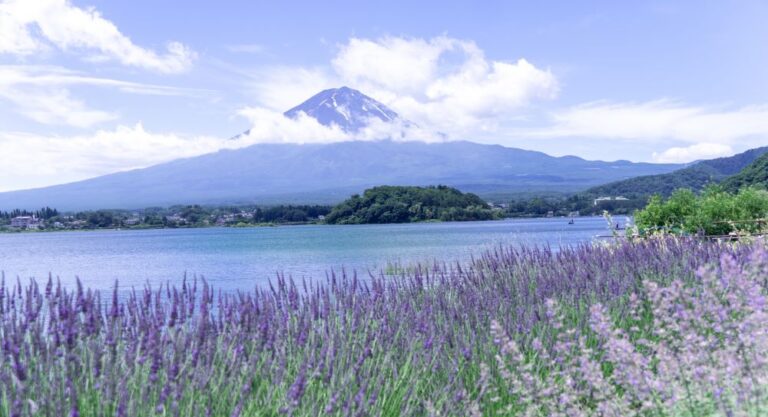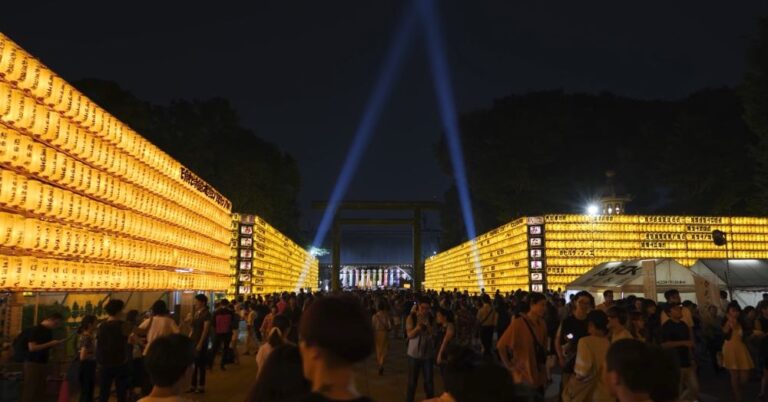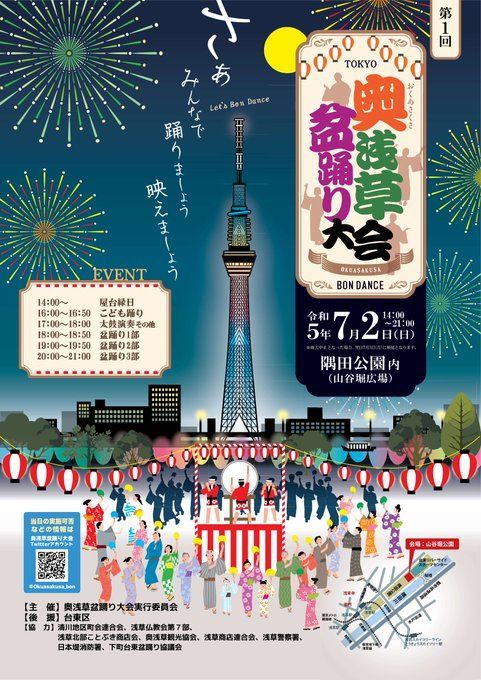Step into a grand spectacle of tradition at Sanno Matsuri, one of Tokyo’s most prominent festivals. Held once every 2 years in mid-June (the next is in 2024), this Shinto celebration fills the streets with elaborate processions, vibrant costumes, and a sense of community that’s truly captivating.
A Festival Rooted in History

Sanno Matsuri is an age-old tradition that can be traced back to the Edo period. The festival is centered around the Hie Shrine, dedicated to the guardian deity of Tokyo. As one of the three great Shinto festivals in Tokyo, Sanno Matsuri offers a unique opportunity to experience the city’s rich cultural heritage.
The Grand Mikoshi Procession
The key attraction of Sanno Matsuri is the grand procession, or ‘Jinkosai,’ held every other year. This 10-kilometer procession is truly a sight to behold, with a convoy of nearly 500 participants dressed in vibrant Heian-era court costumes. They parade through central Tokyo, carrying a mikoshi (portable shrine) that houses the deity from Hie Shrine.
Held Once every 2 years

Experience the allure of Tokyo’s grand Sanno Matsuri parade held biennially in June, marking a highlight of one of the three most celebrated festivals across Japan. Sharing its cyclical venue with Kanda Matsuri – which commences during odd-numbered months every May in alternate years – elevate your senses over 11 days to witness cultural gems and revelries galore. While smaller events are scheduled throughout, only this prized procession commands full attention so do not miss out on what promises to be an exceptional affair.
Route
Join in the festivities at Tokyo’s Hie Shrine, where vibrant colors and cultural significance combine to create an unforgettable experience. Starting and ending at Hie Shrine – a revered sanctuary known for safeguarding the city – this procession holds deep historical ties as it honors the Tokugawa family who presided over Edo during Japan’s iconic Edo period (1603-1867). This year-round festival is one way local communities celebrate their connection with former capital “Edo,” known today as bustling Tokyo.
Parade
The Sanno Matsuri Parade spans nearly 2 km, starting at Hie Shrine and passing through Yotsuya Station before ending up at Yasukuni Shrine. After a half-hour stopover at the Imperial Palace from noon until 12:15 p.m., it moves on past Tokyo Station to hit Nihonbashi Hie Shrine for an hour between 1:30 p.m.- 2:30 pm.
The parade then proceeds through Ginza clock tower at around 3:15 pm and culminates its journey by reaching back to Hie shrine via Shimbashi station; all activities taking place in one day.
Event Outline of Sanno Matsuri
The Sanno Matsuri is a week-long event filled with traditional ceremonies and festive activities. Here’s a rough schedule of the main events:
Day 1: The festival begins with a ceremony at the Hie Shrine.
Day 2 – Day 6: traditional ceremonies and performances, including tea ceremonies and Kagura dances, take place within the shrine grounds throughout these days.
Day 7: The grand procession (Jinkosai) takes place every other year on this day. The procession starts and ends at the Hie Shrine, winding its way through central Tokyo, including a stop at the Tokyo Imperial Palace.
Day 8: The festival concludes with a closing ceremony at the shrine.
Please note that the schedule might vary slightly from year to year, so it’s recommended to check the official Hie Shrine website or local sources for the latest information.
History of Sanno Matsuri

The Sanno Matsuri has a long history dating back to the Edo period (1603-1867). It was originally established to celebrate the guardian deity of Edo (present-day Tokyo). The festival was one of the few that had the honor to parade through the grounds of Edo Castle, the residence of the Tokugawa shogunate, reflecting its significant status during that era.
The festival’s importance continued into the modern era, and it is now considered one of Tokyo’s three great Shinto festivals, alongside the Kanda and Fukagawa festivals. Despite changes and developments in Japanese society over the centuries, Sanno Matsuri remains a cherished event celebrating Tokyo’s cultural heritage and traditions.
Accessing Sanno Matsuri
The festival takes place in and around Hie Shrine, which is in the heart of Tokyo and easy to get to.
By Train: The closest station to Hie Shrine is Tameike-Sanno Station on the Tokyo Metro Ginza Line and Namboku Line. From the station, it’s just a short walk to the shrine.
By Bus: bus routes run through the area, and you can take a bus to Tameike-Sanno Station, which is a short walk from Hie Shrine.
The sum Up
Sanno Matsuri offers a blend of tradition and festivity that’s bound to leave you with unforgettable memories.
There’s more than just spiritual meaning behind Hie Shrine – it holds great historical significance too. The Tokugawa family, whose rule spanned from 1603-1867 during Japan’s ‘Edo period’, have deep ties with this hallowed ground. In fact, they established the grandiose parade you see today as a celebration of their beloved city becoming Japan’s new center.
A must-see event steeped in Japanese tradition awaits at Hie Shrine – don’t miss out on experiencing one of Tokyo’s most important festivals firsthand






